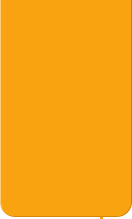



Language Arts: Subjects - Tutorial
Some Helpful Tools
This section will cover the fundamentals and rules for how a subject is used.
How Subjects Are Used
A subject performs the action in a sentence and usually appears as a person,
place, or thing.
How to Identify Subjects
To find the subject of a sentence, first find the action word. Then ask yourself who or what is doing the action.
Samantha ate the delicious red apple.
She ate the delicious red apple.
Stop!
Fans cheered. (Who cheered?)
The boat sailed. (What sailed?)
The frog hopped. (What hopped?)
The boy ran. (Who ran?)
Paris is the capital of France.
This sentence is about Paris.
Novi ordered chocolate cheesecake for dessert.
This sentence is about Novi.
The simple subject is the part of the sentence that does the action.
Simple Subjects
Complete Subjects
The complete subject is the subject and all of the words used to describe it.
The example above is a complete sentence. The subject (you) is understood.
In the second sentence, the pronoun she is used to replace the proper noun Samantha.
The subject of a sentence is the main noun and does the action.
Subjects ask who or what the sentence is about.
The red apples were piled in the basket.
The simple subject is apples.
The large black and white whale landed in the water with an enormous splash.
The simple subject is whale.
The red apples were piled in the basket.
The complete subject is The red apples.
The large black and white whale landed in the water with an enormous splash.
The complete subject is The large black and white whale.
Every sentence has a subject; however, the subject may be implied.
Note: The subject will never be found within a prepositional phrase.
As you may have guessed, a subject is a noun.
A subject can also be a pronoun.
Subject pronouns are: I, you, he, she, it, we, and they.
Subject pronouns can be used to replace nouns.